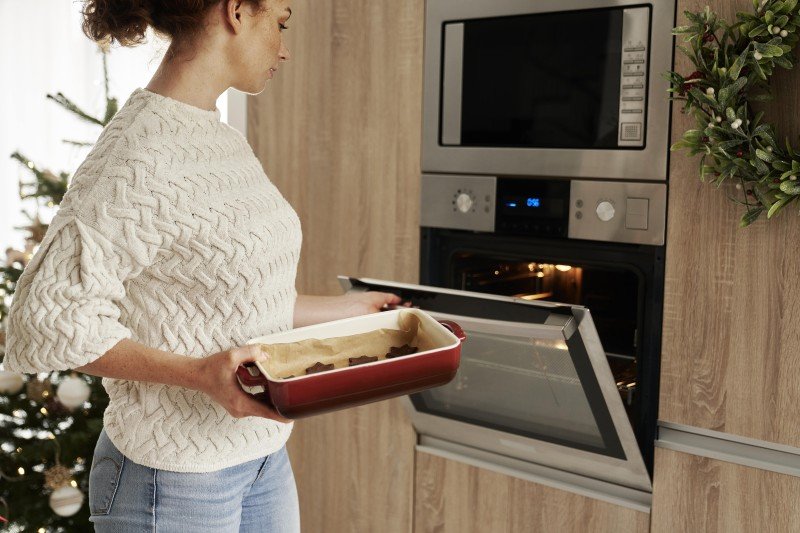Comprehensive List Of Hob And Oven Dos And Don'ts
Understanding Hobs and Ovens: The Essential Kitchen Appliances
In the realm of kitchen devices, few items are as important as hobs and ovens. These devices form the foundation of culinary activities, allowing individuals to create whatever from basic meals to elaborate banquets. Understanding the differences, types, and performances of hobs and ovens can significantly enhance one's cooking experience. This post looks into the complexities of hobs and ovens, offering insights that cater to both newbie and experienced cooks.
What Is a Hob?
A hob, typically described as a cooktop or range top, is the flat surface on which pots and pans are placed for cooking. Hobs are geared up with heating elements that create the required heat for cooking food. They are available in numerous forms, including gas, electric, induction, and ceramic choices. Each type provides distinct advantages and disadvantages.
Kinds of Hobs
Gas Hobs:
- Heat Source: Natural gas or gas.
- Benefits: Instant heat control and responsiveness, chosen by numerous chefs for exact cooking.
- Downsides: Requires a gas connection and can be less energy-efficient.
Electric Hobs:
- Heat Source: Electric coils or smooth glass-ceramic surfaces.
- Benefits: Generally easier to clean up, even heating, and commonly readily available.
- Drawbacks: Slower to warm up and cool down compared to gas.
Induction Hobs:
- Heat Source: Electromagnetic currents.
- Advantages: Quick heating, energy-efficient, and just heats the cookware, not the surrounding surface area.
- Disadvantages: Requires compatible cookware (ferrous materials).
Ceramic Hobs:
- Heat Source: Electric and has a smooth glass surface.
- Advantages: Sleek look, simple to tidy, and even heating.
- Drawbacks: Can take longer to warm up and cool down.
What Is an Oven?
An oven is an enclosed appliance that cooks food by surrounding it with dry heat. Ovens can be standalone systems or combined with hobs in a single appliance referred to as a variety. Ovens are versatile tools that can be utilized for baking, roasting, broiling, and more.
Types of Ovens
Conventional Ovens:
- Heat Source: Electric or gas.
- Benefits: Good for standard baking and roasting.
- Disadvantages: Can have uneven heat distribution.
Convection Ovens:
- Heat Source: Electric or gas with a fan for circulating air.
- Advantages: More even cooking and quicker cooking times due to air flow.
- Drawbacks: Can be pricier and might require modifications in cooking times.
Microwave Ovens:
- Heat Source: Microwaves.
- Advantages: Quick cooking and reheating; fantastic for defrosting.
- Disadvantages: Can not brown or crisp food well.
Steam Ovens:
- Heat Source: Steam generation.
- Advantages: Retains nutrients and moisture in food, much healthier cooking choice.
- Downsides: Longer cooking times and typically greater cost.
Key Differences Between Hobs and Ovens
While hobs and ovens serve the primary purpose of cooking food, their functionalities and utilizes differ significantly. The following table sums up these essential differences:
Feature
Hob
Oven
Cooking Method
Direct heat
Enclosed heat
Primary Use
Boiling, sautéing, frying
Baking, roasting
Heat Source
Gas, electric, induction
Gas, electric, steam
Cooking Area
Flat surface
Enclosed area
Cooking Time
Usually quicker
Differs based upon dish
Control & & Precision
Immediate and direct
Count on settings and timers
Benefits of Using Hobs and Ovens Together
Integrating making use of a hob and an oven can greatly enhance the cooking process. Here are some advantages:
- Versatility: Different kinds of food can be prepared simultaneously.
- Efficiency: Using both permits various cooking methods, such as searing on the hob and baking in the oven.
- Time-Saving: Multi-tasking can considerably lower overall cooking time.
Maintenance and Care
To ensure the longevity of hobs and ovens, regular upkeep is essential. Here are some ideas:
For Hobs:
- Clean spills instantly to avoid staining.
- Usage appropriate cleaners for particular products (e.g., ceramic cleaner for glass-ceramic hobs).
- Regularly examine gas connections for leaks (for gas hobs).
For Ovens:
- Wipe down the interior after each usage to prevent build-up.
- Use self-cleaning features if available, or apply oven cleaners for difficult spots.
- Regularly examine seals and gaskets for wear and tear (to preserve heat performance).
Frequently asked questions About Hobs and Ovens
1. What is the best type of hob for a beginner cook?
Response: A ceramic or electric hob is frequently suggested for novices due to ease of use and cleansing.
2. Can I utilize any pots and pans on an induction hob?
Answer: No, induction hobs need pots and pans made from magnetic products (e.g., cast iron or stainless steel).
3. How frequently should I clean my oven?
Answer: It is a good idea to clean your oven every few months, or more regularly if you use it often.
4. Is it better to bake in a convection oven?
Answer: Yes, stoves are frequently much better for baking as they offer even heat distribution. Nevertheless, some delicate recipes may benefit from traditional ovens.
Understanding the functionality and distinctions in between hobs and ovens is vital for any cooking lover. Whether one chooses the immediate heat of a gas hob or the precision of an induction cooktop, each type provides unique advantages. Likewise, Ovens On Sales differ commonly in function, from conventional baking to steam cooking. By valuing these devices' functions in food preparation, cooks can enhance their cooking skills and improve their kitchen activities.
